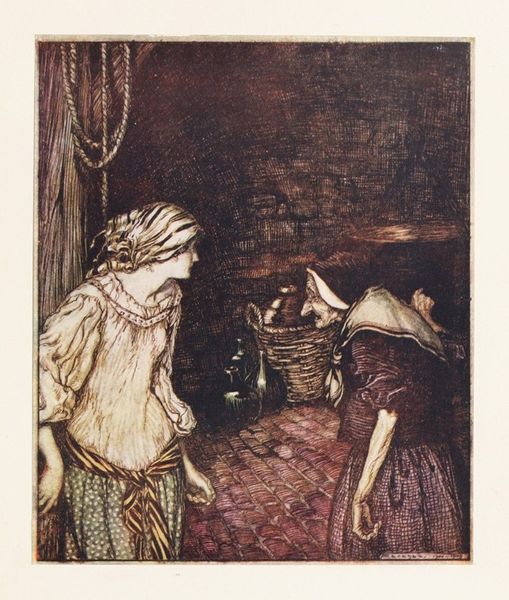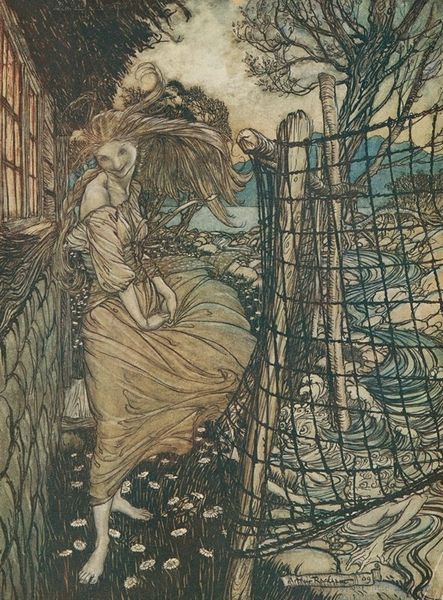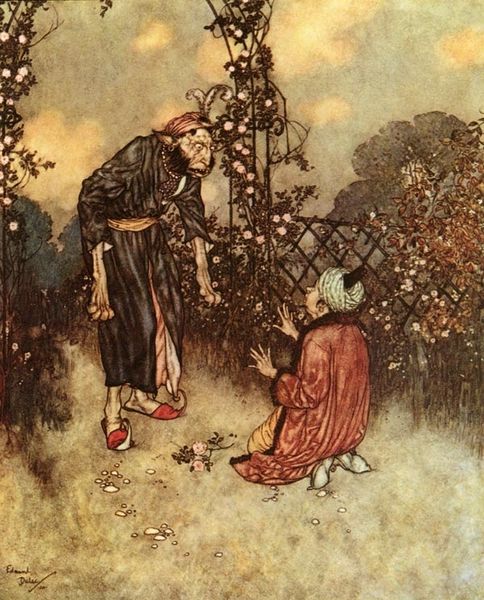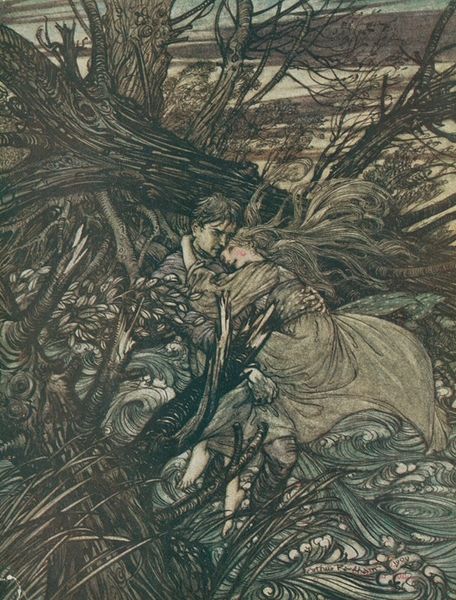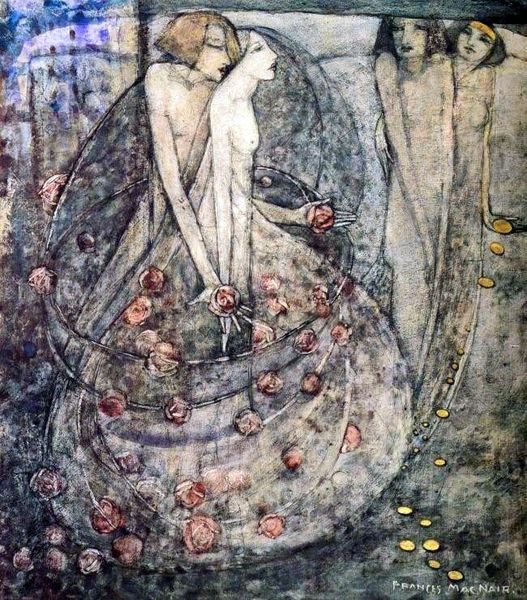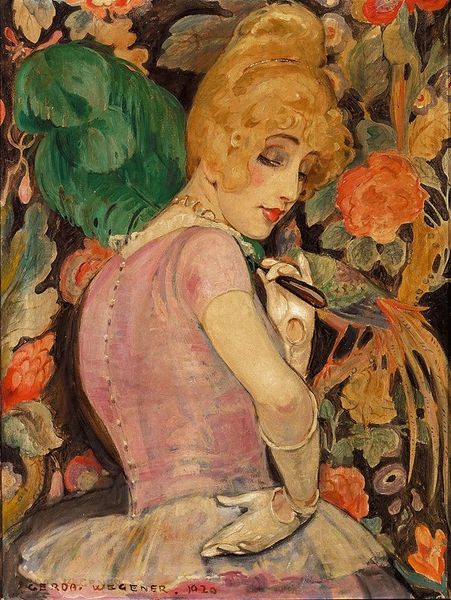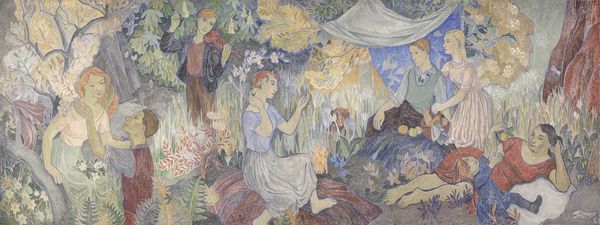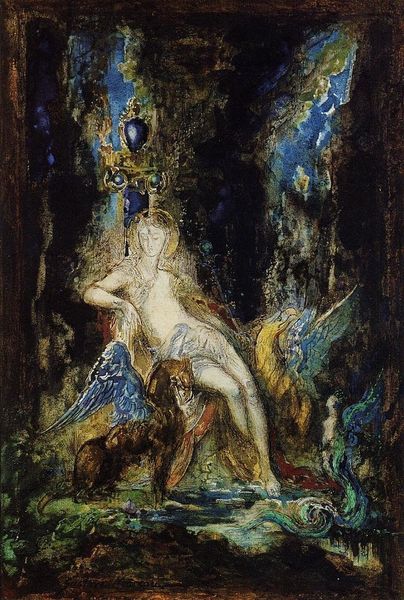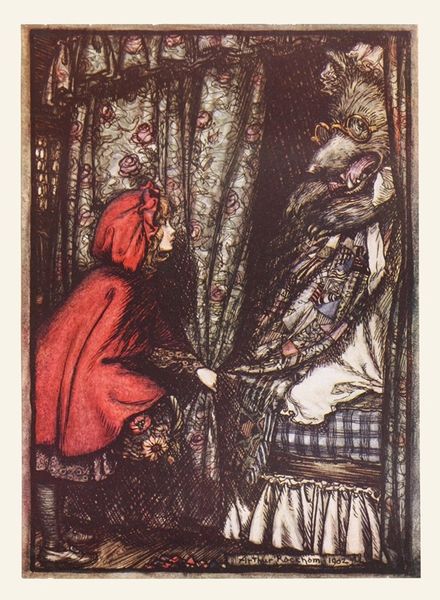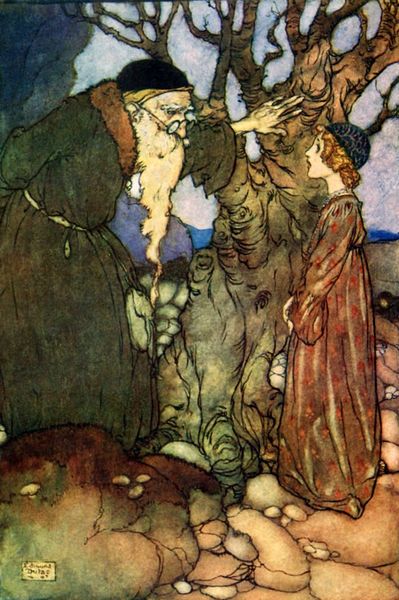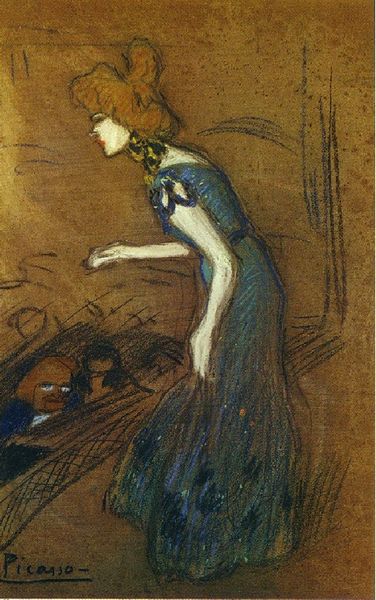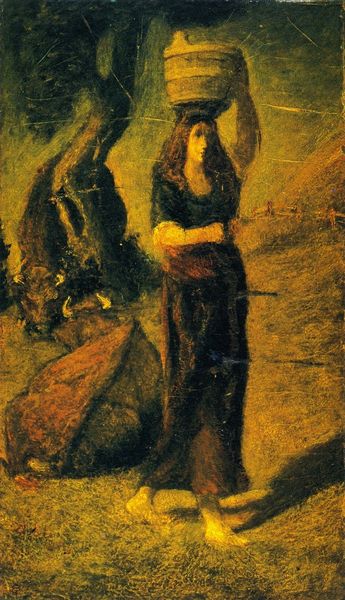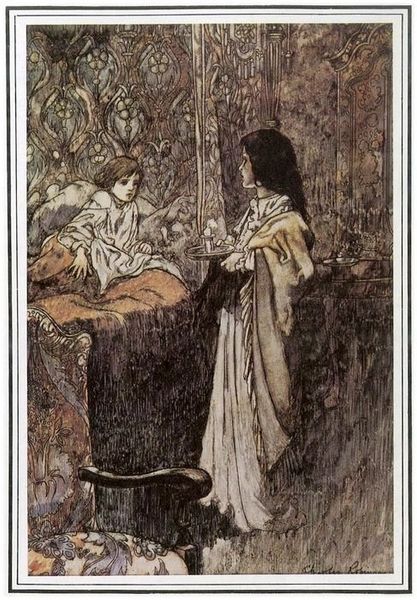
drawing, tempera, painting, oil-paint, paper, pendant
#
portrait
#
drawing
#
fairy-painting
#
narrative-art
#
tempera
#
painting
#
oil-paint
#
landscape
#
figuration
#
paper
#
form
#
intimism
#
romanticism
#
line
#
symbolism
#
history-painting
#
pre-raphaelites
#
academic-art
#
mixed media
#
pendant
Copyright: Public domain
Curator: Edward Burne-Jones, a central figure in the Pre-Raphaelite movement, may not be immediately recognizable to everyone by name, but this piece, titled "Owain departs from Landine" painted with mixed media including oil and tempera, exemplifies many of the styles for which this art movement is recognized. Editor: My initial reaction is one of constrained melancholy, the somber palette with touches of romantic light evokes a powerful sense of departure. It feels caught between worlds. Curator: Note how the symbols contribute to this sentiment. The weary figure of Owain slumped against the cold stone suggests internal conflict. This depiction echoes familiar archetypes. Think of the knight as representative of someone stuck between duty and love. His red hair, quite distinctive, might symbolize his passionate nature or the burning conflict he faces. Editor: And that portal behind him, inscribed "Romance" - almost as an exit sign from his life. That suggests this choice has societal and gender implications as well. His choice would take him out of the role defined for him by others. I'm wondering what this piece communicates about expectations around medieval masculinity. The fairy-painting style blends seamlessly with the ideals of romanticism. Curator: Indeed. Burne-Jones was deeply immersed in Arthurian legends and the symbolism of quest and moral choices. Note also the subdued use of light. There's a dramatic shadow emerging from the open doorway suggesting the journey he will go to may be one to be feared or hesitant to begin. This use of light evokes classical artistic themes of inner turmoil, a powerful visual device with staying power throughout cultural memory. Editor: It’s tempting to read this painting as a commentary on the artist's own societal constraints, and the suffocating role of the time, if the sitter feels trapped by this "Romance" which is how we might consider an expectation put on him at this point in history. Curator: Possibly. This scene resonates because we all grapple with our own Landines, these personal places of comfort from which we must depart to pursue our destinies. It also acts as a narrative that echoes from other periods. This symbolism makes it more than a simple painting. Editor: This work reminds us of the continuous negotiations and redefinitions that society and history impose on the notion of love, choice and free will.
Comments
No comments
Be the first to comment and join the conversation on the ultimate creative platform.
